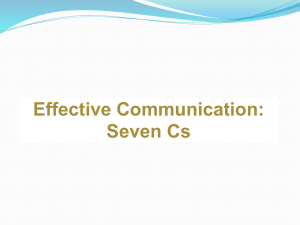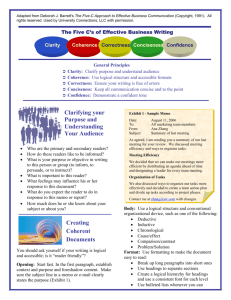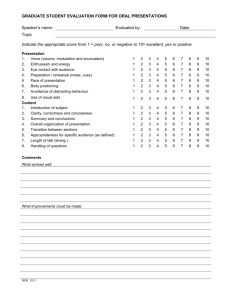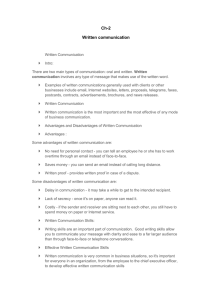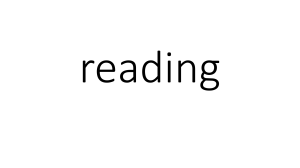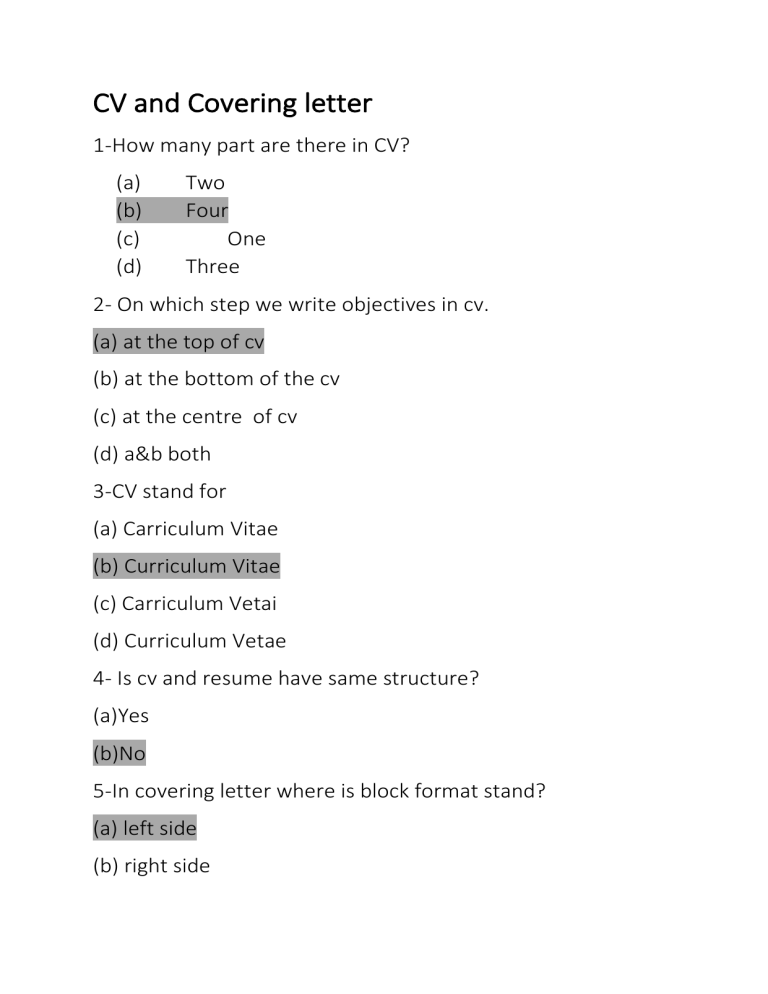
CV and Covering letter 1-How many part are there in CV? (a) (b) (c) (d) Two Four One Three 2- On which step we write objectives in cv. (a) at the top of cv (b) at the bottom of the cv (c) at the centre of cv (d) a&b both 3-CV stand for (a) Carriculum Vitae (b) Curriculum Vitae (c) Carriculum Vetai (d) Curriculum Vetae 4- Is cv and resume have same structure? (a)Yes (b)No 5-In covering letter where is block format stand? (a) left side (b) right side (c) at centre (d) at bottom SKIMMING AND SCANNING 1-A student is reading fast, looking for specific information in a manual. What is this reading sub skill known as? (a)Skimming (b)Scanning (c)Bottom up reading (d)Critical reading 2-What does scanning refer to in the reading? (a)Reading for specific information (b)Reading for the gist of the text (c)Fast reading for others (d)Slow reading for oneself 3-Scanning is a reading activity which helps learners to ________. (a)draw out the desired information (b)enrich their vocabulary (c)develop competence in linguistic items (d)know meaning of words 4-Looking quickly over a textbook to get a general or superficial idea of the content is called(a)scanning (b)extensive reading (c)intensive reading (d)skimming 5-Skimming a text means ________. (a)reading the titles to understand (b)reading aloud the text (c)reading for information (d)reading for meaning E-MAIL WRITING 1-Which of the following is correct format of E-mail address? (a) name@website@com (b) name@website.com (c) www.website.com (d) website.name.com 2-While sending an e-mail Line describes the contents of the message (a) to (b) subject (c) contents (d) about 3-It is important to read the email completely before responding (a) Only if you have time (b) Not important at all (c) Always (d) Only if it is from seniors 4-Which of these should be avoided in an email? (a) Wrong E-mail address (b) Subject line (c) Smileys (d) Re-reading 5-Who is credited as the inventor of email? (a) Charles Babbage (b) Elbert Einstein (c) Ray Tomlinson (d) Michael Faraday 6-E-mail is the fastest means of ___. (a) Written Communication (b) Oral Communication (c) Conventional Communication (d) None of the Above 7-BCC Stands for __. (a) Blind Copy of Content (b) Blind Collected Copy (c) Blind Carbon Copy (d) Blind Carbon Content 8-SMTP stands for (a) Service mail transport protocol (b) Simple mail transport protocol (c) Simple mail transfer protocol (d) Service mail transfer protocol 9-Email account can be obtained by registrating (a) Email (b) ISP (c) Mailbox (d) none 10-____is a keyboard shortcut key to compose email (a) Ctrl+N (b) Ctrl+P (c) Ctrl+X (d) Ctrl+D MCQS OF technical and business writing 1- The communication must be complete. A) Conciseness B) Completeness C) None of these D) consideration Answer: B 2-implies emphasizing on a specific message or goal at a time, rather than trying to achieve too much at once. a) Clarity b) c) d) Concreteness Consideration conciseness Answer: a 3- message implies the message should show the sender’s expression as well as should respect the receiver a) b) c) d) Clarity Courtesy Correctness All of these Answer :b 4-communication implies that there are no grammatical errors in communication a) b) c) d) Concreteness Clarity Correctness courtesy Answer: c 5-communication implies being particular and clear rather than fuzzy and general. a) Concreteness b) All of these c) Clarity Answer: a 6-Effective communication must take the audience into a)None of these b) Consideration c) It persuades the audience. d) courtesy Answer: b 7- communicating what you want to convey in least possible words without forgoing the other C’s of communication. a) Concise message is non-repetitive in nature. b) All of these c) Conciseness d) correctness Answer :c 8-s a formal style of presenting objective facts and information a)report writing b) Conciseness c) Consideration d) clarity answer: a 9- This section indicates the purpose of the report a) b) c) d) Background Introduction All of these Analytic report Answer: b 10- This section presents factual information without any interpretation or suggestions. a) Introduction B )Conclusions c ) Findings e) background answer: c 11- report is used to objectively present information without any analysis. a) Informational report b) Analytical reports c) News reports d)introduction Answer: a 12- parts of reports are a)3 b)5 c)1 d) All of these answer: 5 12- Each finding is summarised as a) b) c) d) in this section Conclusions 5 Findings 6 Answer: a 13-An report evaluates a problem . a)analytic report b) news report c) None of these d) News report answer: b 14- is communicating complete information about a topic or idea in a few words. a. Conciseness b. Courtesy c. Corcreteness d. Correctness 15- is ensuring what you’re saying is communicated clearly and with no room for misunderstanding. a. Clarity b. Conciseness c. Courtesy d. Corcreteness 1. A presentation is a kind of verbal communication in which a person shares fact-based information to an audience that is____ A. Specific B. Small C. Big D. Diverse 2. A presentation should be______ A. Cleared B. Well Prepared C. Both A & B D. None of These 3. To become more effective, you must get control over A. The Material B. The Audience C. Your Behavior D. All of Above 4. This term refers to an argument that appeals to one's emotions A. Logos B. Pathos C. Ethos D. All of Above 5. The person responsible for creating the three methods of persuasion is? A. Alexander the Great B. Plato C. Aristotle D. None of These 6. This term refers to an argument that appeals to logic A. Ethos B. Rhetorical Fallacy C. Pathos D. Logos 7. Have A Strong ____on What You Want to Talk. A. Perception B. Conviction C. Deception D. Affirmation 8. Which of these is usually written in a form of a memorandum? A. Informal reports B. Professional reports C. Business reports D. Formal reports 9. Information in your presentation should be A. True B. False 10. When presenting, your posture should be ___________. A. Annoyed B. Shy C. Nervous and angry D. Confident and relaxed 11. Reading out a presentation is: A. Dull B. Helpful C. Allowed D. Not allowed 12. The outline of a presentation should include: A. Acknowledgments B. Beginning, middle C. Possible questions D. References and an end of the from the audience presentation 13. Important considerations in rehearsing a presentation are: A. Timing and pace B. Attire C. Food and beverages D. Audience 14. For better readability, it is preferable that bullet points are A. Short phrases or B. Long sentences C. Page of text D. Complete partial sentences paragraphs 15. Planning is the ——– step of presentation. A. Middle B. Third C. Final / last D. Initial / first
